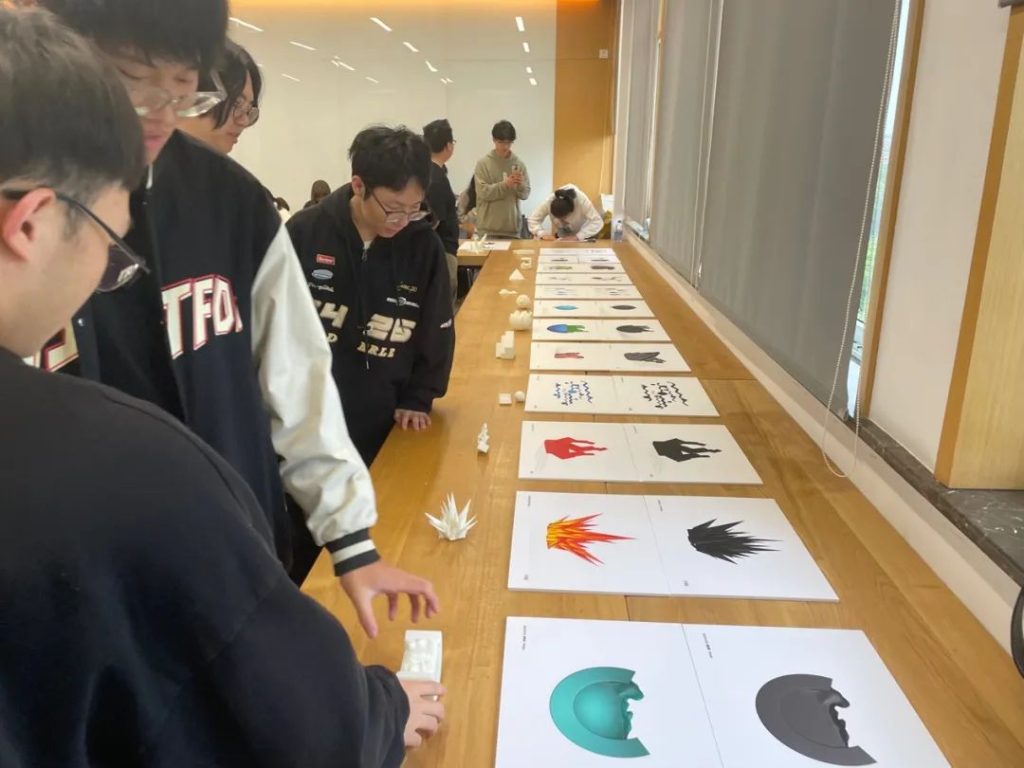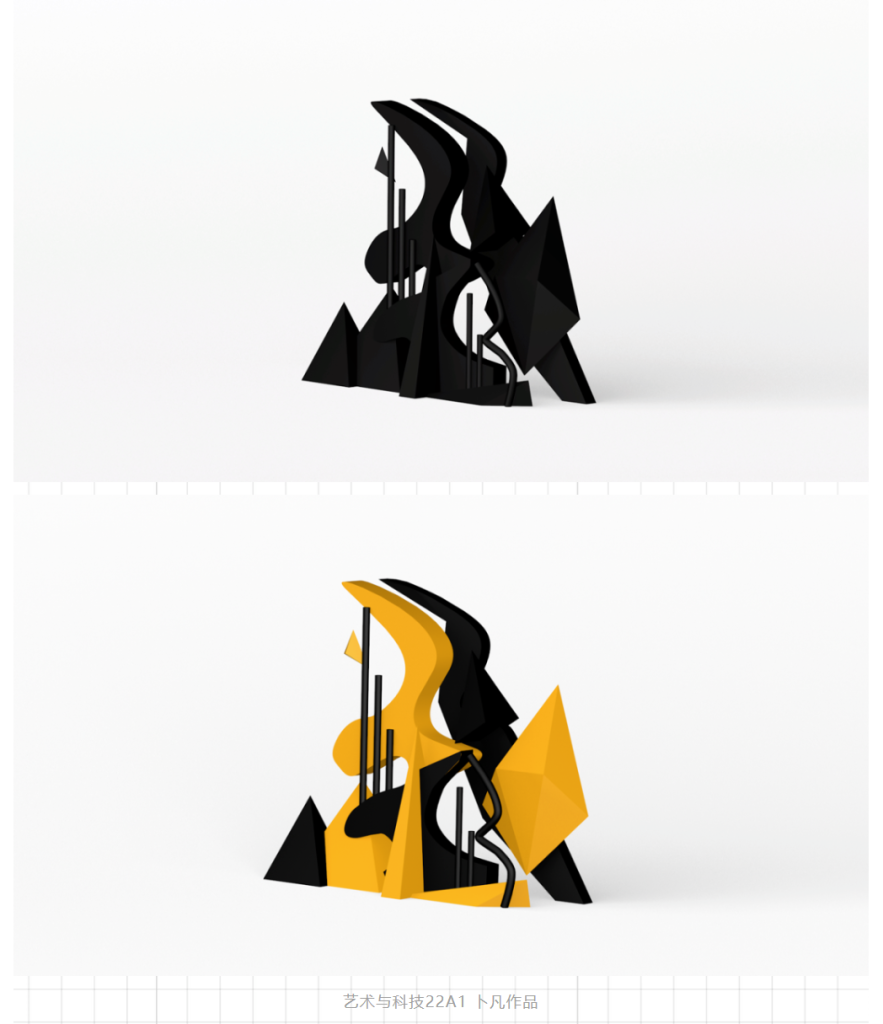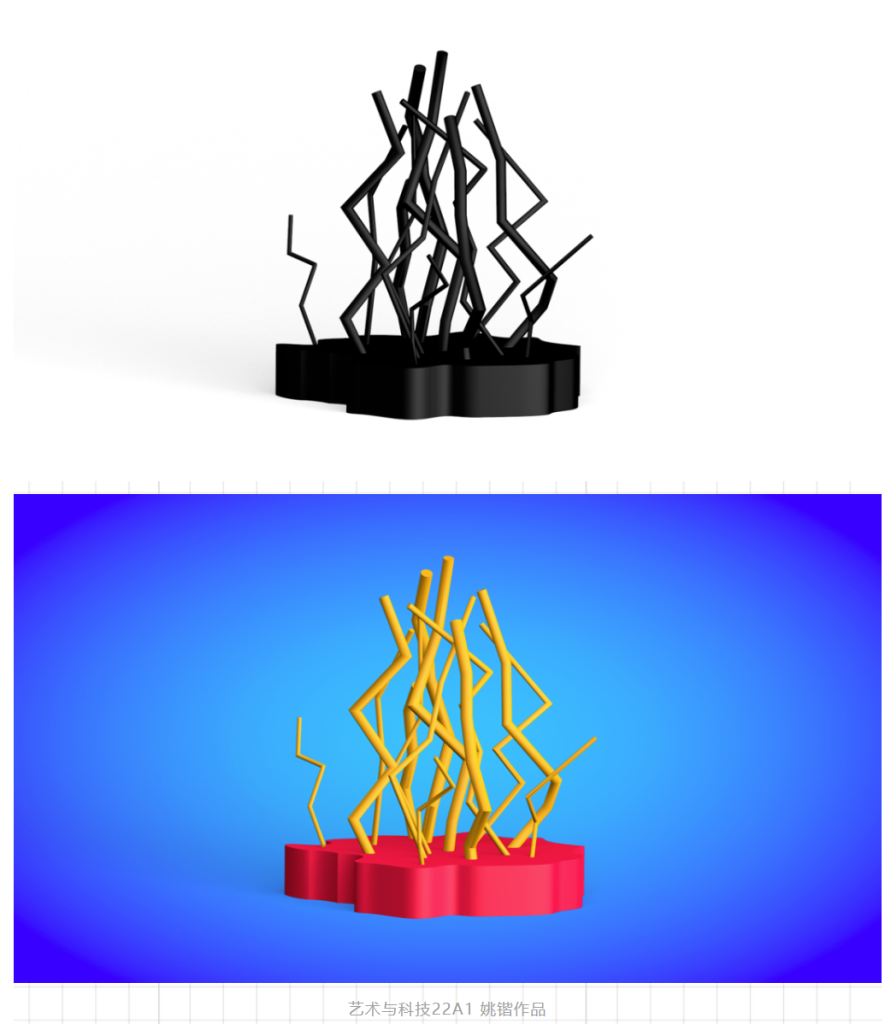
Professor Jan Tomas broke down the unfamiliar and complicated language of digital modeling into easy-to-understand knowledge points, and led the students of Art and Technology 22 to "speak" their minds in professional language.
DigitalDigital Visualization Language is a compulsory course in Art and Technology at Sino-German College of Design and Communication, taught by Prof. Jan Tomas and assisted by Ms. Permission and Ms. Zhou Ying.The course introduces the knowledge and use of 3D modeling language, the basic skills of 3D modeling in Cinema 4D, which includePolygon Modeling (Polygon Modeling), Curve Modeling (NURBS Modeling), Screen Layout, Camera Layout, Lighting Layout Rules, Timeline Animation and 3D PrintingThe basics of the
This course focuses on practice and aims to train students to use 3D modeling language forAbility to narrate, think independently, design and communicate across cultures.

Jan Tomas, graduated from the University of the Arts in Berlin, taught at Texas State University and the Academy of Fine Arts in Prague, Czech Republic, and is currently an associate professor at the Brand University of Applied Sciences in Germany.Professor Tomas, whose main research interests are in multidimensional motion graphics and interaction design trends, founded in 2000 theJan Tomas Design Office (www.jantomas.com)Providing text and interaction design solutions for a wide range of multinational brands and media.

The realization of ideas and the construction of art cannot be achieved without the mastery of technology.The Digital Modeling Language course focuses on helping first-year students understand the designer's overall design process and teaching them to use 3D modeling design software to implement ideas into realistic designs.
Professor Tomas focuses on creative exercises for his students. During the course, he encouraged the students toEarth, Air, Water, FireChoose one of the 4 themes, sketch it through research and compositional techniques, and use appropriate geometry and thematic elements to represent the specific theme. In the subsequent stage, he introduced the basics of 3D modeling, which includesDifferences in 3D software, differences between polygon modeling and surface modeling, fundamentals of 3D composition, basic rendering skills and basic animation skills.With a blend of ideas and expertise, the students followed his lead in shaping their own complimentary pieces.

Professor Tomas chose to conclude the class with a full English presentation of the students' work and the presentation of their work. After the interactive exhibition of the students' work, Professor Tomas reiterated the importance of the design proposal presentation to the students based on the presentation, and focused onEmphasis is placed on creative expression and polishing of details.

Art & Technology 22A1 Ge Yanrou
Topic:Earth
Work description:"The theme of my work is the earth because it is where we live and we are most familiar with it. I used curved surface modeling to draw circles and spheres to represent the earth, the sun and the creatures in the water. I also used polygonal modeling to draw triangles to represent mountains and jungles, and used Boolean functions to give them a layered, cascading effect, and rectangles to represent houses. When coloring, I used yellow to paint the earth to express hope and orange to paint the sun to reflect itsWarm and pleasant environment, paint the forest and mountains in green to showThe Vitality and Vitality of the EarthThe creatures of the earth are painted in different shades of blue to reflect theirBiodiversity, use a lighter blue to paint the river, reflecting theThe clarity of the river, painting houses with different colors, embellishing the earth.Make the whole picture more dynamic and colorful. I think that this is my ideal Earth."
Course Evaluation:"Digital Modeling Language is a very interesting course. Initially, the instructor set four themes, from which we picked the most interesting ones and found corresponding materials, started with pencil and paper, drew our own sketches, and revised and improved them.Start to understand and try modeling with Cinema 4D softwareDuring this time, I learned a lot of new things. During this time, I learned a lot of new knowledge and the teacher would teach us to use different functions to present our work better. In each lesson, the teacher would give us suggestions for changes and guide us to modify the modeling pictures and animations to our satisfaction. By the end of the course, I also had a better understanding of modeling and how to apply my creativity."

Art & Technology 22A1 Bu Fan
Topic: Fire
Work description:Fire gives me a feeling of vitality, of being alive, so I gave it a rippled form with vertical lines to signify extension and continuity. The prismatic block on the right represents the heart of the flame, forming an overall triangular structure, which, together with the two triangular cones on the left, has an invisible feeling of growth. The two triangular flames on the outside simulate the sense of leaping of real flames.
Course Evaluation:Through this course, I learned about 3D design that is not limited to two-dimensional, and that I can observe some natural elements around me in depth and connect with modern art to complete my own model design. The overall structure of the course was clear and fully mobilized our design thinking, and in the process I gained a higher level of understanding of creativity.Professor Tomas and Mr. Xu were good at encouraging and praising students, explaining to us in depth the various points of using the software, guiding us to think, and really making the teaching model student-centered.

Art & Technology 22A1 Yao Kai
Topic: Fire
Work description:In my opinion, fire is aggressive energy that burns and moves in an irregular direction, but generally burns toward the center. In my design, I use thin columns to bend and twist from bottom to top to show the dynamics and aggressiveness of fire, while the columns are close to the center. From the front and the side, it looks like the shape of fire, and the chassis also imitates the shape of fire.
Course Evaluation:Through the learning of digital modeling language, I initially understood the functions of Cinema 4D and learned the basic operation skills. I learned how to use simple shapes to express abstract things, which improved my abstract thinking ability during the exchanges with Mr. Xu and Professor Tomas.Both teachers were very enthusiastic, giving advice and praise to each student, respecting and encouraging everyone's creativity, and they made me feel more confident in the creative process.

Under the professional and meticulous guidance of Professor Tomas
The students of Art Branch explored the 3D dazzling world
May the students use the technology that brings the sky to reality
To shine in the subsequent path of study

